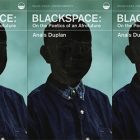A Lot of Sorrow, A Lot of Faith
I round a dark alcove in the Reykjavík Art Museum to find twenty or so people gathered in a space the size of a hip basement venue. Before them is a screen on which The National plays. Around them are speakers. The band’s image is life-size, high definition, and dry-ice-plumed, so the line between stage and reality blurs as dust motes waft through the projected light.
“Cover me in rag and bones,” sings frontman Matt Berninger. Some people talk, glasses of wine in hand from the opening reception. A few lean against the back wall or sit on the floor, but mostly we stand together listening, like an indie rock audience except no one nods or dances. I sway. I can’t help it. “Sorrow” is catchy.
Berninger has called this song from the album High Violet “a person’s love affair with his own sadness,” but it is an affair common enough to invite communion. It plumbs an emotion that is not pride, grief, anger, or any of the other emotions that isolate and unify us. Sorrow is curious, the way it squeezes the lungs and pools in the stomach. There is pleasure in it, Berninger says.
We know who indulge it, lying on the carpet listening on repeat to Blue Train or dancing for hours to the progression in Back to Black. Sometimes guiltily, sometimes recklessly, but generally alone. Even if we can find someone else nose diving heartache on the same weekend, we are unlikely to be equals in our patience or obsession. Plus, we might distract each other from swirling every beaker of sensation.
The recorded crowd applauds when the song ends but louder when the band begins again, cheering their stamina. The National is in the midst of a six-hour-and-five-minute performance in collaboration with Icelandic artist Ragnar Kjartansson. A Lot of Sorrow took place at the Museum of Modern Art’s exhibition space, PS1, on May 5, 2013. The live event generated approximately 105 renditions of “Sorrow,” a number so close to the 108 beads on a mala, it makes sense that Berninger described the experience as “mantra-like.”
My own experience is much less taxing. I watch four or so iterations, as other visitors come and go, then visit other exhibits. The entire Hafnarhús is devoted to Kjartansson’s art, including paintings, sculptures, drawings, photographs, video installations, and another live durational performance on the ground floor. My partner and I visit again and again, spending hours at the museum over the next three days. After the opening night crowd disperses, A Lot of Sorrow often has only two or three other people in it. Twice I slip into it like a crack in a cave and have it all to myself. It’s a strange illusion—to feel intimate in a videoed crowd, but no stranger, perhaps, than memorizing someone else’s poem.
The first time I read Meghan O’Rourke’s “Faith,” the final line opened a window in my mind the way a mantra can. This is a poem I can use, I thought, imagining potential applications for its unlocking mechanism during loss or confusion. I began at once stitching it onto my inner fabric. The impulse to embody it was similar to wanting to replay a song, but its words supplied the inverse—an escape hatch from a state that has become unbearable. It begins with a paradox:
And into my doubt
the bells rang—
I recognized the chime of mourning doves that follow. The morning that my brother died, the air split and pealed into a rainbow that poured over the mountain in front of our house. The contrast felt the same. Too the impossible yielding to grief in her later lines:
bodies are used
like weapons
it is what
they are meant for.
She empowers surrender, creating a dynamic as contrary as succulent sorrow. How many times have I turned the corner of that line—in bed, behind the wheel, alone in a crowd? One hundred and five is a reasonable guess given the five years since I committed it to memory. It isn’t the number of resonant echoes I measure, but the depths of experience each sounds.
Around the 95th repetition of “Sorrow,” Berninger’s rich baritone breaks, and he begins to cry. The backing musicians take over the vocals, and the crowd joins in to help them. It is the only moment in the performance that inspires my own tears. The lead singer said later he couldn’t find his wife and daughter in the crowd. He was alone, as the lyrics ask not to be left. For me, this moment of vulnerability when he has to sit out the song forges the performance’s moment of highest tension and beauty, because together we expand, process, and communicate our capacities for rich, complex emotions, but one-by-one, we have to venture into each territory without knowing how we will fare. Is it any wonder some choose to take with them, like a ring of keys, lyric spells?



